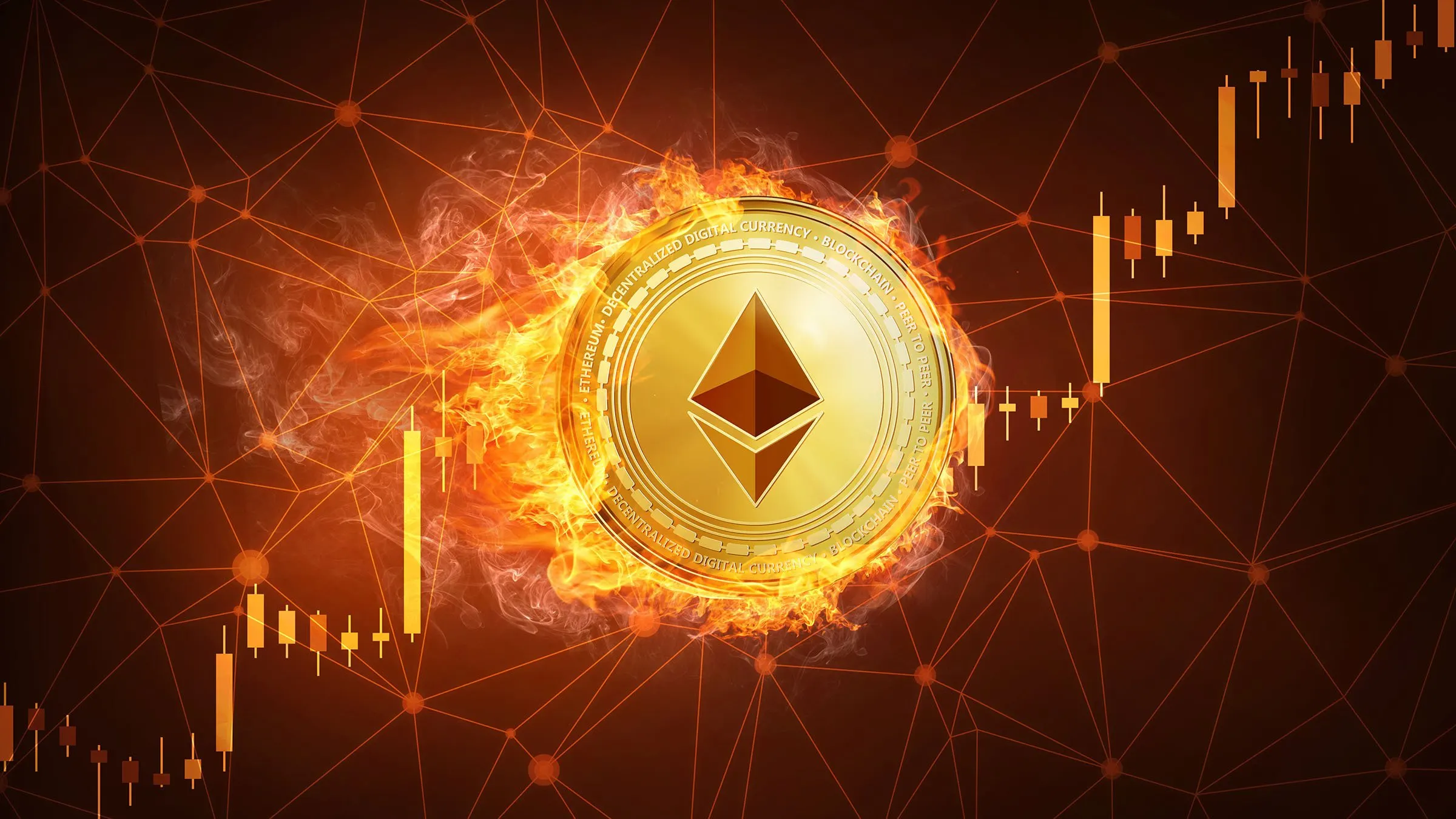The goerli fork finalized! 😀https://t.co/LIa3d4Ml5H
After the fix was patched in, the validators came back online and the chain started finalizing again. The MEV circuitbreaker automatically disables and mev-blocks have started flowing through as well.
Yay client diversity! https://t.co/cLz3ZRxnXq
— parithosh | 🐼👉👈🐼 (@parithosh_j) January 17, 2024
Coin Prices
BTC
$96,916.00
3.81%ETH
$3,339.90
5.00%XRP
$2.14
2.31%BNB
$942.13
2.19%SOL
$146.11
2.31%USDC
$0.999685
0.02%STETH
$3,341.51
5.12%TRX
$0.303134
0.37%DOGE
$0.147973
4.03%ADA
$0.416348
2.51%FIGR_HELOC
$1.018
-1.91%XMR
$751.85
13.37%WSTETH
$4,090.49
5.15%WBT
$57.89
3.39%WBETH
$3,632.38
5.05%WBTC
$96,657.00
4.03%BCH
$603.29
-1.26%WEETH
$3,628.97
5.20%LINK
$14.18
4.41%USDS
$0.999865
0.00%BSC-USD
$1.00
0.07%WETH
$3,342.94
5.21%LEO
$8.70
-3.83%XLM
$0.237639
3.14%CBBTC
$97,074.00
4.14%ZEC
$436.69
12.34%SUI
$1.84
1.24%USDE
$1.00
-0.02%AVAX
$14.63
0.78%HYPE
$26.11
6.55%LTC
$78.15
1.98%CC
$0.143344
-1.02%HBAR
$0.124711
4.76%SHIB
$0.00000881
0.35%WLFI
$0.183228
2.49%USDT0
$1.00
0.09%SUSDS
$1.082
-0.01%TON
$1.76
-0.10%CRO
$0.103396
2.45%SUSDE
$1.22
0.01%DOT
$2.24
-0.32%UNI
$5.75
3.35%PYUSD
$1.001
0.09%USD1
$0.999072
-0.03%MNT
$0.992361
3.24%RAIN
$0.00899977
1.71%TAO
$293.39
1.87%M
$1.59
-3.01%AAVE
$177.70
2.60%PEPE
$0.00000631
4.45%BGB
$3.72
4.39%OKB
$115.88
0.10%XAUT
$4,605.88
0.41%ICP
$4.29
21.82%NEAR
$1.82
-0.91%USDF
$0.997819
0.32%JITOSOL
$183.24
2.35%ETC
$13.23
1.70%WETH
$3,343.07
5.07%ENA
$0.2415
8.23%ASTER
$0.747963
3.92%PAXG
$4,620.35
0.43%PI
$0.208791
0.65%PUMP
$0.00295615
14.36%BUIDL
$1.00
0.00%SOL
$145.98
2.23%POL
$0.158216
0.95%WLD
$0.607719
0.62%JLP
$4.96
2.14%BNSOL
$159.40
2.09%HTX
$0.00000171
0.36%USDG
$0.999784
0.01%USYC
$1.11
0.01%KCS
$11.50
1.86%APT
$1.93
-0.34%SYRUPUSDC
$1.15
0.01%RETH
$3,860.72
5.21%RLUSD
$0.999456
-0.02%WBNB
$942.51
2.32%SKY
$0.059612
0.70%BFUSD
$0.999586
0.06%KAS
$0.04810848
0.62%USDC
$0.999812
0.00%ONDO
$0.406265
0.21%ATOM
$2.59
-0.85%ARB
$0.220271
1.76%RENDER
$2.37
-0.70%RSETH
$3,545.11
5.08%ALGO
$0.137217
0.87%GT
$10.50
1.23%IP
$3.42
-10.18%FIL
$1.58
2.14%NIGHT
$0.068315
3.28%TRUMP
$5.63
1.31%MYX
$5.87
-4.49%HASH
$0.0208123
-4.95%QNT
$75.15
-0.47%DASH
$85.35
52.18%FBTC
$95,863.00
2.11%VET
$0.01226411
2.45%LBTC
$96,827.00
3.74%SOLVBTC
$96,636.00
3.56%BONK
$0.00001136
6.01%NEXO
$0.970138
-0.42%FLR
$0.01160176
2.30%USDD
$1.00
0.05%LSETH
$3,581.50
5.78%METH
$3,615.79
5.06%XDC
$0.04570076
-1.34%USDTB
$0.999684
0.19%JAAA
$1.022
0.01%PENGU
$0.01305501
3.70%SEI
$0.126351
1.44%OUSG
$113.96
0.01%USTB
$10.96
0.01%WBTC
$96,513.00
3.79%WM
$1.001
0.13%USDC.E
$0.999803
-0.00%MORPHO
$1.40
4.45%JUP
$0.23695
8.90%EZETH
$3,573.95
5.26%CLBTC
$95,739.00
-0.24%JUPSOL
$169.88
2.35%STX
$0.391673
-0.74%CAKE
$2.06
3.03%OSETH
$3,549.94
5.12%OP
$0.355852
-1.08%USDY
$1.11
-0.02%BDX
$0.090555
-0.42%VIRTUAL
$1.048
3.45%FET
$0.292649
2.26%WFLR
$0.01161998
2.35%SYRUPUSDT
$1.11
0.13%USDAI
$1.00
0.02%RIVER
$32.18
56.41%WETH
$3,343.33
5.18%DAI
$0.999969
0.01%CRV
$0.430911
1.48%XTZ
$0.58568
-0.05%KHYPE
$26.38
6.52%EUTBL
$1.22
0.01%CTM
$0.134478
2.87%SPX
$0.626899
4.03%TBTC
$96,816.00
4.18%AERO
$0.62488
9.11%CHZ
$0.055283
3.56%INJ
$5.59
1.82%USD0
$0.999102
0.11%LIT
$2.19
4.66%LDO
$0.647944
2.22%WETH
$3,342.63
5.13%GTETH
$3,343.21
5.20%FLOKI
$0.00005397
3.62%ETHFI
$0.79279
2.35%TIA
$0.593329
-1.22%MSOL
$197.40
2.17%FDUSD
$1.001
0.12%GHO
$0.999094
-0.03%TUSD
$0.999857
0.09%LIQUIDETH
$3,610.14
4.74%ETHX
$3,604.72
5.22%FTN
$1.086
-0.06%CBETH
$3,744.15
5.19%GRT
$0.04287731
0.19%STRK
$0.090736
4.26%WAPE
$0.225521
1.07%SYRUP
$0.386869
-2.19%SBTC
$98,068.00
4.66%2Z
$0.127443
5.14%STKAAVE
$176.47
4.66%JASMY
$0.00884473
1.46%STEAKUSDC
$1.11
0.05%IOTA
$0.102693
2.49%BTT
$0.00000044
4.19%AB
$0.00445583
-0.62%FARTCOIN
$0.419825
4.83%ENS
$10.94
3.05%WIF
$0.415973
6.20%CFX
$0.079094
-0.10%SUN
$0.02117401
1.54%PYTH
$0.070651
1.41%USDB
$0.996524
-0.76%JTRSY
$1.091
0.01%BSV
$20.06
0.95%JST
$0.04037387
1.57%WSTX
$0.394763
2.78%GNO
$147.84
3.30%DCR
$22.65
17.94%PENDLE
$2.29
3.86%TEL
$0.00404097
4.93%XCN
$0.00897388
2.69%TWT
$0.914089
1.61%DOGE
$0.148045
3.89%BTC.B
$96,890.00
3.88%KAIA
$0.062928
0.30%CRVUSD
$0.99066
-0.71%SAVAX
$18.19
0.69%NFT
$0.00000037
-0.21%EURC
$1.16
0.01%CUSD
$0.987372
-1.22%GALA
$0.0075197
1.50%OHM
$21.57
0.35%EETH
$3,338.00
5.02%KAU
$147.42
-0.14%XPL
$0.168589
7.07%SAND
$0.127322
4.14%USR
$1.001
0.07%ZRO
$1.67
8.85%H
$0.185705
11.44%RAY
$1.25
6.10%KAG
$90.33
2.93%S
$0.088419
3.83%GLM
$0.333777
-2.79%WSTUSR
$1.13
0.07%PIPPIN
$0.327541
-1.28%VSN
$0.090135
-0.23%ZK
$0.03716284
4.06%WEETH
$3,625.84
5.07%UBTC
$96,890.00
3.82%THETA
$0.31675
-0.19%BUSD
$1.002
0.03%BAT
$0.205265
2.06%USX
$0.999399
-0.01%WETH
$3,345.31
5.26%UDS
$2.41
-0.26%MANA
$0.152907
4.12%A
$0.180627
1.23%GTBTC
$97,251.00
4.10%ASBNB
$999.17
2.36%NEO
$4.02
2.58%BBTC
$96,944.00
4.27%FRXETH
$3,336.91
5.12%WETH
$3,326.17
4.36%ZBCN
$0.00288878
-0.64%FRAX
$0.992144
-0.08%STABLE
$0.01524783
2.20%CMETH
$3,613.75
4.89%WSTETH
$4,093.13
5.13%COMP
$27.60
3.07%BBSOL
$164.92
2.33%AR
$4.07
0.64%HNT
$1.40
2.19%BORG
$0.26613
4.43%MON
$0.02405373
-0.30%DSOL
$170.47
2.49%ULTIMA
$6,858.69
1.14%MWC
$23.58
0.06%MERL
$0.237255
-4.65%
